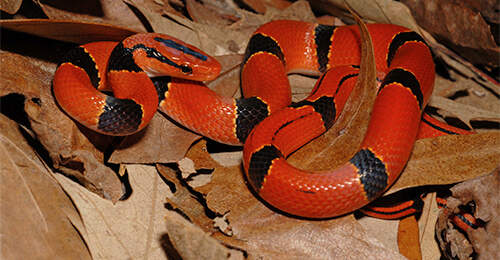Snake Facts
So many snakes! Snakes are found in a wide variety of environments on every continent except Antarctica. There are over 3,400 species of snakes, and 18 families, but most can be separated into 5 main groups:
1. Boas
2. Pythons
3. Colubrids
4. Vipers
5. Elapids
Snakes are cold blooded vertebrates of the class Reptilia, order Squamata, and suborder Serpentes. These legless carnivores are covered in protective scales and have the ability to consume their prey whole.
Getting Started With a Pet Snake
It’s important to know that snakes have an incredible sense of smell and detect prey by flicking their tongue and catching scent particles in the air. When they bring their tongue into their mouth, they run it across their Jacobson’s Organ, which sends a signal to their brain to identify what they smell. Snakes are known for being a bit nervous and defensive. If they are handled often and carefully they should warm up to you and look forward to see you!Housing and Habitat
It is important with snakes to research their natural habitat and try your best to mimic it. Some snakes live in trees in the rainforest, while others burrow in the sands of the desert. Duplicating that environment is important for your snake to live a long happy life in your home. Snakes, like all reptiles, need a terrarium with a day and night cycle with proper lighting.You can build your own terrarium from scratch our glass terrariums, cages and tanks page is a great place to start!
Snakes require:
- Heat source to stay warm as well as cool areas in their tanks so the animals can self-regulate their temperatures.
- A temperature gradient, meaning a cool area and a warm area, is important necessity for any animal’s living space and will help keep them healthy.
- UVA/UVB lighting which are essential to maintaining proper healthy scales and bones.
- Decorations that mimic their natural habitats and provide cover for hiding and help with shedding. Snakes will not thrive without proper and adequate décor.
What do Snakes Eat?
In the wild snakes would eat rodents, small mammals, small birds, bird eggs and sometimes frogs, small lizards, or smaller snakes. In captivity as pets, snakes can mainly thrive off of rodents, such as mice and rats, that are properly sized for the snake.
How To Safely Handle Your Young Pet Snake
With nearly all snakes, hatchlings and younger snakes, in general, may be more nervous when you first get them. Many times this will cause them to be squirmy or want to hide, other times they may get defensive and may try to bite. This is their only way to defend themselves and in their eyes, you are a big scary predator. Make sure to handle them gently and don’t hold them too tight. Allow them to move over your hands slowly and hold them closely over a surface in case they fall, to avoid injury. Over time, they will become more accepting of handling and can be amazing animals to hold and interact with.
Always wash your hands after handling any reptile!
Should I Get a Snake as a Pet?
Snakes do make great pets for the right owners with the right breeds. But you must do your research about behaviors, size, and lifespans. Research the species you have in mind before purchasing to make sure you are prepared for its needs throughout its life. Also, check local and state regulations where you live.
Types of Snakes Make Great Pets
African House SnakeBrazilian Rainbow Boa
Carpet Python
Children’s and Spotted Python
Common Kingsnake
Corn Snake
Dumeril’s Boa
Garter Snake
Gopher, Bull, and Pine Snake
Grey-Banded and Variable Kingsnake
Kenyan Sand Boa
Milk Snake
North American Rat Snake
Prairie and Mole Kingsnake
Western Hognose
Woma Python
Select a Snakes Care Sheet to Download Care Sheets

